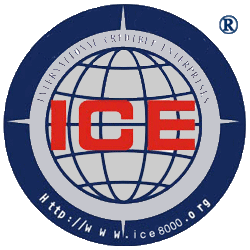Enterprise Competitive Advantage and Competitiveness Analysis-World Credit Organization
3.4 Enterprise competitive advantage and competitiveness analysis
The competitive advantage and competitiveness of an enterprise have an important impact on the performance ability and development trend of the enterprise.
1. Competitive advantage
To analyze the medium-term risks of an enterprise, it is necessary to evaluate the competitive advantage of the enterprise. An unfavorable competitive position means high risk, while a favorable competitive position means low risk. The so-called competitive advantage refers to the advantages that a company has over its competitors in terms of the goods or services it provides. A manufacturer of consumer goods has such a competitive advantage if it has a wider distribution channel than its competitors have a narrower distribution channel. However, in general, the competitive advantage that enterprises hope to obtain is usually determined by the characteristics, quality and price of products. Enterprises will maintain a clear competitive advantage because the products they produce have higher quality or lower prices. If the competing product is very similar to the firm's product (for example, processed food), then the firm can gain a competitive advantage by creating a better brand image and making consumers perceive the firm's product as different and more attractive.
The need to gain a competitive advantage determines the characteristics of the competitive environment in which an enterprise operates. However, unless the competitive advantage gained by a firm is protected, this advantage will gradually diminish as competitors try to catch up. This means that continuous research and development of new products and markets is an essential part of a company's strategy to maintain sales and profits.
Michael Portet, author of the book "Competitive Strategy and Competitive Advantage", believes that companies should adopt competitive strategies to gain some kind of competitive advantage so as to achieve long-term survival. Competitive strategy means "to take offensive or defensive actions to build a defense mechanism in the industry that can successfully cope with various changes, so as to obtain higher investment returns."
Porter defines three competitive strategies that firms can adopt:
(1) Leading in total cost (that is, the total cost is lower than that of the same industry)
The total cost leadership strategy requires the company to become the lowest-cost producer or service provider in the industry. By producing goods with the lowest cost, a firm can compete on price with other firms in the industry and earn the highest profit per unit.
In general, total cost leadership can be achieved by minimizing unit cost through mass production.
(2) Product differentiation
A total cost leadership strategy wins customers by offering goods at low prices, while a product differentiation strategy works by improving product quality and selling it at a higher price. The premise is that customers are willing to pay more for higher quality. Customers have limits on how much they can pay, and there is a trade-off between quality and price. Therefore, the goal of the differentiation strategy is to enable customers to achieve the best balance between quality and price (the term quality refers to any product characteristics that customers need, including customer service). Businesses want to offer products that are more cost-effective than competitors.
Using the following three methods can produce better quality products:
1. Innovative products, that is, to produce completely different new products with obvious quality advantages or particularly low prices. An ideal innovative product should have both of these advantages. In order to develop innovative products such as new drugs and electrical appliances, huge capital and manpower must be invested in research and development, and this process is very risky.
2. Improved products. This type of product is not completely different from other products, but it is better than other products because of its better performance and competitive price. Generally, improved products are manufactured by applying new technological achievements to existing products.
3. Competing products. Compared with other products, such products do not have obvious advantages, but they are a special combination of cost and performance. A classic example of competing products is the automotive industry. Cars generally don't all sell at the lowest price, nor do they all have the best comfort and performance. Almost all cars are aimed at only one segment of the automotive market.
An aggressive differentiation strategy has several implications. Enterprises must provide better performance and better service relative to the price, and must be recognized by customers. Therefore, enterprises must continue to innovate in order to stay ahead of competitors. If a competitor has an innovative product of its own, the firm must be able to imitate it quickly. In this way, companies pursuing an active differentiation strategy will have huge R&D budgets or advertising budgets.
(3) Aggregation and subdivision
The third competitive strategy defined by Porter is the agglomeration strategy, that is, the enterprise only targets a certain part of the market, rather than relying on one product to occupy the entire market. The basis of the concentration strategy is to segment the market and then specialize in a sub-market. This strategy is suitable for companies entering the market for the first time.
When using the cost aggregation strategy, the company only specializes in the production of certain products, or concentrates its energy on developing a small area to keep the cost at the lowest level in the sub-market. Firms can then compete on price in selected submarkets. Printing, garment manufacturing, and auto repair typically use cost aggregation strategies.
When using a quality focus strategy, firms select a certain submarket to compete on quality (through product diversification). A typical industry applying this strategy is high-end consumer goods manufacturing. The main risk faced in the application of the quality aggregation strategy is that the sub-market is too small to provide a profit base for the enterprise.
Although the above three competitive strategies have certain risks, Porter believes that companies should adopt one of them. If the company takes a compromise route, it can only obtain very low profits.
Second, competitiveness
Strong competition is characteristic of a healthy and profitable industry. Enterprises in this industry must be able to respond to market changes and threats from competitors with lower prices and higher quality when responding to competition, and maintain a certain market share.
Factors that affect the strength of market competitiveness are shown in the figure below:

Every factor that competes in the market can weaken the position of a business in the market.
(1) Existing competitors.
The existence of a large number of competitors in the market makes it difficult for any enterprise to maintain a competitive advantage. The total output capacity of the market may be higher than the market demand, thereby creating pressure on prices and profit margins, and eventually causing some enterprises to exit the market (temporarily or permanently). In the late 1980s, the UK suffered from an economic recession, and there was excess capacity in the construction and building materials industries. The industry's prices and output capacity gradually declined in the 1990s as a large number of factories went bankrupt.
If the market is saturated, companies must work hard to increase their market share. For this reason, companies have to increase marketing expenses and lower product prices, which ultimately leads to a decline in profit margins.
When market demand dwindles, weaker competitors exit the industry. If the cost of exiting the market is high, the enterprise will face serious financial crisis. For example, enterprises have huge investment in equipment, and these equipments have no other use; at the same time, enterprises must pay huge severance pay to employees.
(2) Competitive threats and opportunities of new market entrants
A growing market attracts new competitors. How easy it is for new competitors to enter and exit the market directly affects the intensity of competition in the market.
If the cost of entry to a market is low (as typically occurs in services and new product markets), then all competitors in the market are at a competitive disadvantage. Every business must accept market prices and lower profit margins. At the same time, since new entrants generally have extremely high innovation capabilities, companies need to continuously diversify their products. Lenders should be vigilant when providing medium-term loans to high-margin service industries (such as advertising, design consulting, etc.), because the entry cost of such industries is very low.
(3) Power of the supply side
In industries with a small number of key raw material suppliers, companies are in a disadvantageous strategic position. This is because when companies purchase raw materials, they must be forced to accept high prices set by suppliers, thereby reducing the profit margin of their own products. The following situations will also put the company in a passive position: the only supplier is not reliable; the political situation in the supplier's country is unstable; the supplier is a potential acquisition target of competitors.
(4) The power of the buyer
Similar to the situation above, if the number of buyers in an industry is low and the competition in the industry is high, both product prices and profit margins will be driven down due to the bidding power of the buyers. Certain large retailers were able to pressure their suppliers to obtain lower prices and longer payment terms. In this way, suppliers will need greater credit support.
(5) Alternative products
Competition is fierce in industries where customers can switch suppliers or use alternative products at a lower cost. The process of customers changing suppliers or using alternative products involves the consumption of capital and manpower. Customers will only replace if the benefit outweighs the cost. The supplier is in a better position relative to the customer if the customer has to retrain employees when the customer chooses an alternative product.
The above content is excerpted from "ICE8000 Credit Investigation, Analysis, and Rating" (written by Fang Bangjian, free to use, but please indicate the source)


